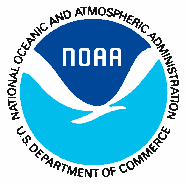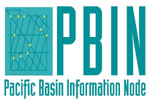U. S. Fish and Wildlife Service
|
Smithsonian Environmental Research Center
|
 |
The Mission of the U.S. Fish and Wildlife Service is working with others to conserve, protect and enhance fish, wildlife, and plants and their habitats for the continuing benefit of the American people. |
 |
The Smithsonian Environmental Research Center is a global leader in the study of ecosystems in the coastal zone, where land and water meet and where human populations and their impacts are most concentrated. |
NatureServe
|
National Biological Information Infrastructure
|
 |
NatureServe is a non-profit conservation organization that provides the scientific information and tools needed to help guide effective conservation action. NatureServe and its network of natural heritage programs are the leading source for information about rare and endangered species and threatened ecosystems. |
 |
The National Biological Information Infrastructure (NBII) was a broad, collaborative program to provide increased access to data and information on the nation's biological resources. The mission of NBII was to collect and organize biological data from the U.S. and make it available to scientists, resource managers, policy-makers, educators and the general public. |
National Oceanic and Atmospheric Administration
|
U.S. Department of Agriculture
|
 |
The National Oceanic and Atmospheric Administration (NOAA) conducts research and gathers data about the global oceans, atmosphere, space and sun, and applies this knowledge to science and service that touch the lives of all Americans. |
 |
The USDA provides leadership on food, agriculture, natural resources, and related issues based on sound public policy, the best available science, and efficient management. |
Great Lakes Environmental Research Laboratory
|
Pacific Basin Information Node
|
 |
The Great Lakes Environmental Research Laboratory (GLERL) conducts high-quality research and provides scientific leadership on important issues in both Great Lakes and marine coastal environments leading to new knowledge, tools, approaches, awareness and service. |
 |
PBIN was a regional node of the National Biological Information Infrastructure (NBII). NBII was a project office within the Biological Resources Division (BRD) of the United States Geological Survey (USGS). |
Aquatic Nuisance Species Task Force
|
Protect Your Waters
|
 |
The ANS program addresses all new nonindigenous aquatic species activities that are conducted, funded, or authorized by the Federal Government, except those involving intentional introductions. It seeks to complement effective existing nonindigenous species activities rather than supplant them. To achieve its goals, the ANS program consists of three elements as well as several supporting elements and related activities. The core elements are prevention, detection and monitoring, and control. |
 |
The "Stop Aquatic Hitchhikers!" campaign and the Protect Your Waters web site empower recreational users to become part of the solution in stopping the transport and spread of these harmful hitchhikers. |
Habitattitude
|
Reef Environmental Education Foundation
|
 |
The national Aquatic Nuisance Species Task Force, working through a partnership between the U.S. Fish and Wildlife Service, the Pet Industry Joint Advisory Council, the National Sea Grant College Program and state fish and wildlife agencies has launched a new public awareness campaign called Habitattitude™. |
 |
The Reef Environmental Education Foundation (REEF) is a grass-roots organization that seeks to conserve marine ecosystems by educating, enlisting and enabling divers and other marine enthusiasts to become active ocean stewards and citizen scientists. |
EDDMapS
|
iMapInvasives
|
 |
EDDMapS is a web-based mapping system for documenting invasive species distribution. Launched in 2005 by the Center for Invasive Species and Ecosystem Health at the University of Georgia, it was originally designed as a tool for state Exotic Pest Plant Councils to develop more complete distribution data of invasive species. EDDMapS goal is to maximize the effectiveness and accessibility of the immense numbers of invasive species observations recorded each year. |
 |
The iMapInvasives Partnership facilitates the management and sharing of invasive species information, including extent of infestations, search efforts, and treatment outcomes. The Partnership seeks to support all those working to safeguard environmental resources from the effects of invasive species including citizens, volunteers, natural and agricultural resource managers, as well as scientists, program administrators, and policy makers. |